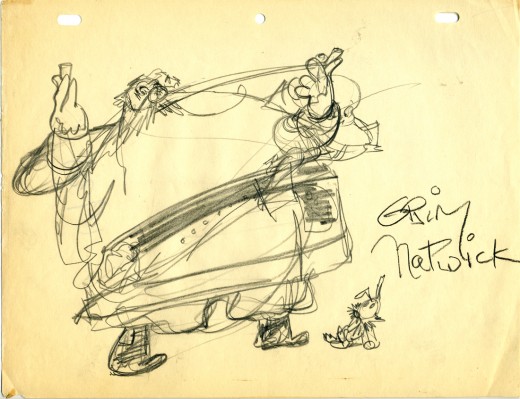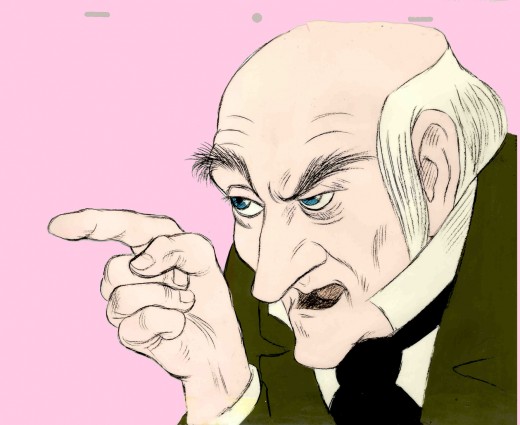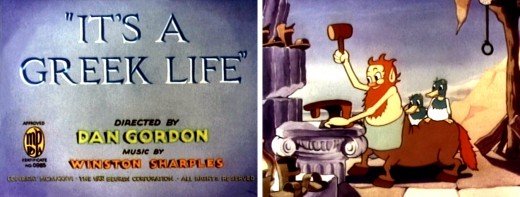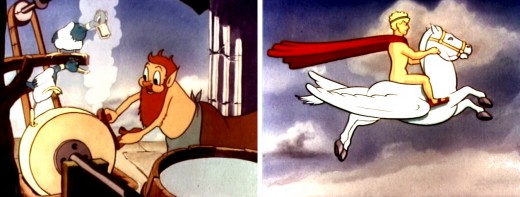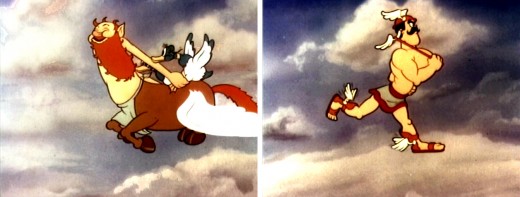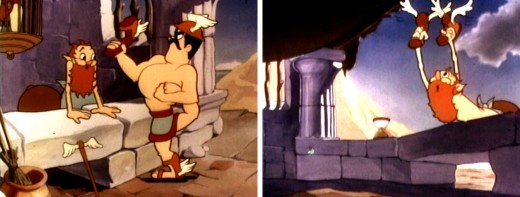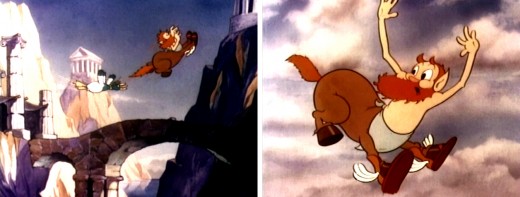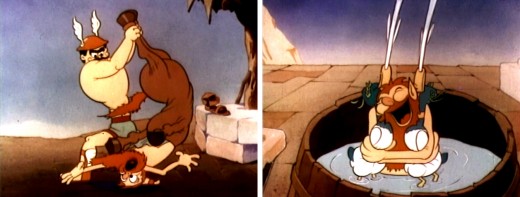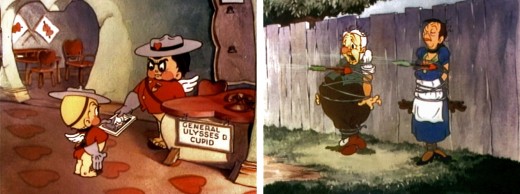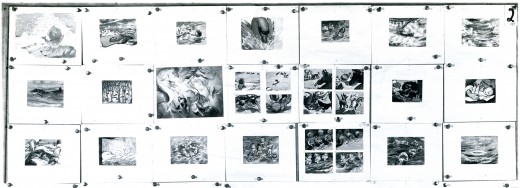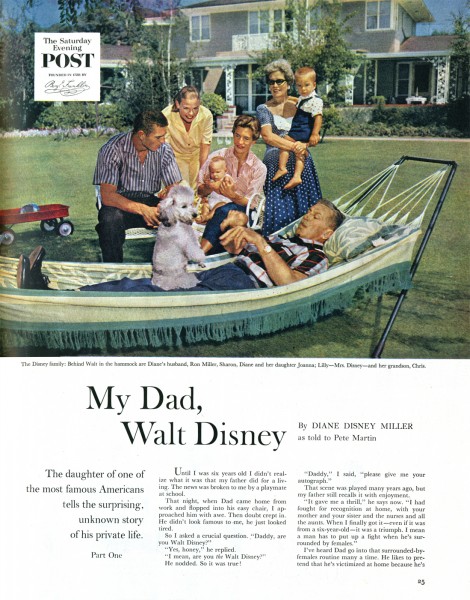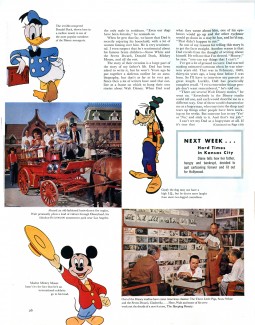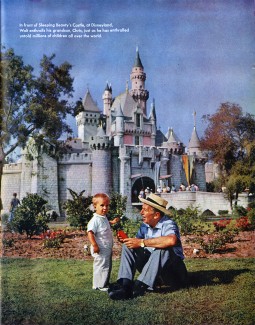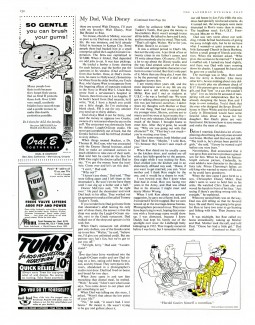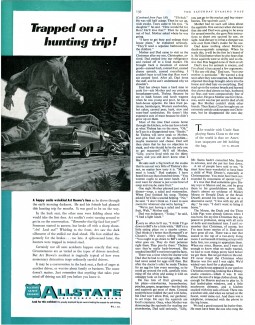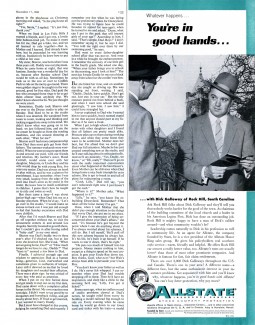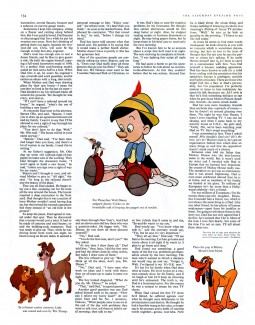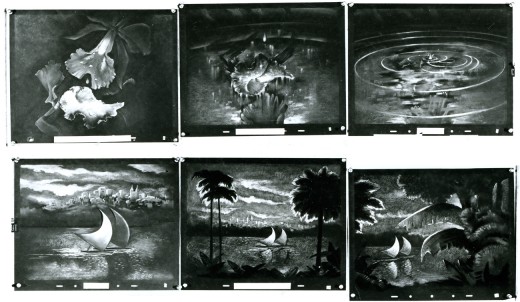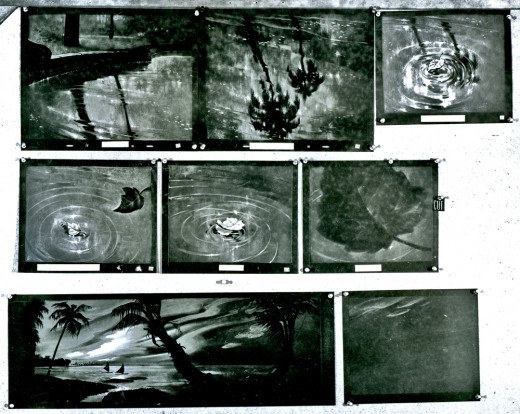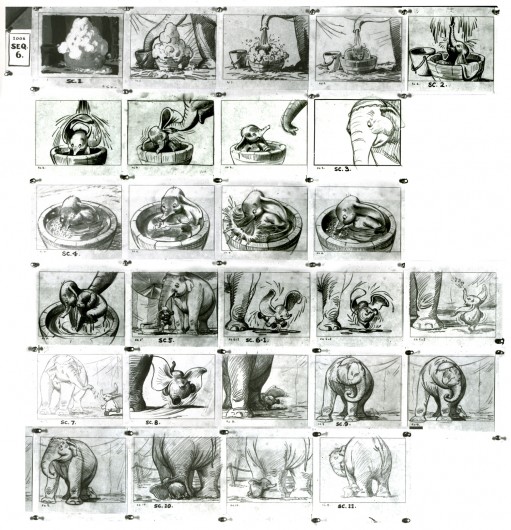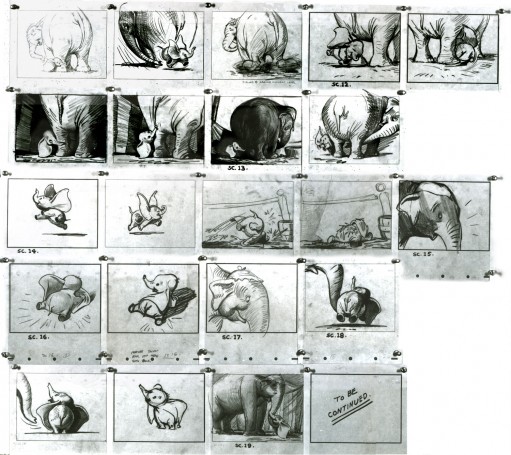Category ArchiveAnimation Artifacts
Animation Artifacts 25 Dec 2007 08:24 am
A Grim Christmas
Animation Artifacts &Richard Williams 24 Dec 2007 09:26 am
Christmas is Coming
I posted this cel two years ago. It was from a scene Richard Williams animated for his Christmas Carol. The drawing was done on cel not on paper with a mars omnichrome pencil. Hence, the inking is Dick’s, as well.
David Nethery has posted a cel from Abe Levitow’s sequence – probably my favorite scene in the film comes from this sequence. The scene where Christmas Present moves back his robe to reveal the two children – “ignorance” and “want”. I think I disappointed Dick when I told him this years ago and hadn’t named one of his scenes. Given the way Dick worked on Raggedy Ann, I’d guess he did the cleanup on these scenes as well.
Animation Artifacts &Comic Art 22 Dec 2007 09:03 am
Terry Comix
I have this comic book page from Paul Terry’s Comics – pg 27. I thought I’d post it since I don’t know who drew the page and thought someone out there might have a good idea. I love Gandy Goose, so it’s enough that he’s featured in the strip. That was reason enough to purchase it a couple of years ago.
The magazine was probably published in 1952-3. Jim Tyer was drawing a lot of the strips at the time, though I’m not sure this is his artwork. The eyes look too normal despite the distortion in some of the bodies.
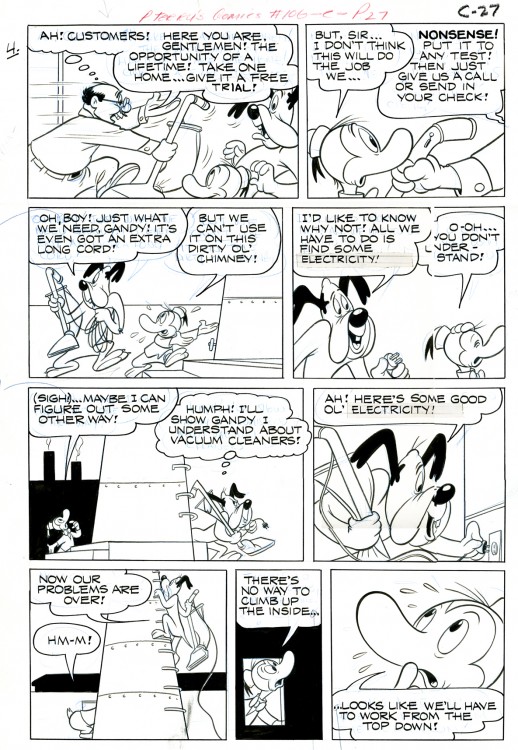
__________(Click the image to view larger.)
Animation Artifacts &Commentary &Daily post 17 Dec 2007 08:36 am
Return to an Eyvind Earle Christmas
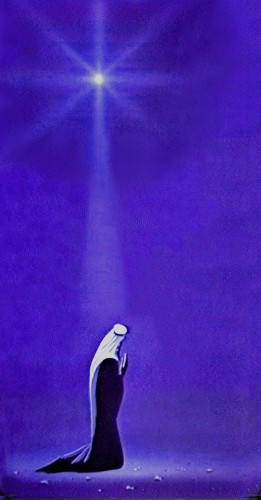 – Way back in July I posted this piece.
– Way back in July I posted this piece.
It’s a celebration of the animated segments Eyvind Earle did for The Tennessee Ernie Ford Show. I thought this would be a good time to repeat the post.
“The Story of Christmas” is a piece which is about ten minutes long interspersed throughout this half hour special.
The entire show is a Christian carol sing featuring the Roger Wagner Chorale singing around Tennessee Ernie’s gospel read and sing-along.
The whole is a very reverent piece with no attempt at lightness and comes off as very religious. This would certainly not work on television today, never mind ABC TV which is where it premiered as one episode of the Tennessee Ernie Ford series. Some of you may remember the animated Hubley titles for the show which can be found in John Halas‘ Technique of Film Animation.
Three segments feature the animated graphics with the group singing. The only real narrative tells the birth of Christ in animation. Otherwise the Roger Wagner Chorale, dressed in Dickensian outfits, gather around varied sets looking like the early 19th Century England.
(Click any image to enlarge.)
Earle’s animation was done immediately after Sleeping Beauty was completed. He’d left the studio (or was more probably left by the studio during their massive layoff at the time) and formed his own small independent studio to do work like this. I think this was probably his largest job, and it seems perfectly suited to his style.
Lots of pans and flare effects are built around sliding cells trying to imitate the look of the multiplane camera. There really is no animation here, just the sliding cels of the characters over the pans. It’s still quite attractive for what it is and holds the attention. The piece is well planned and shows off everything Earle had learned at Disney’s studio.
Go here to purchase a copy of the dvd.
The following are frame grabs from many of the scenes:
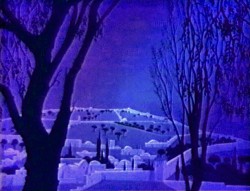 _
_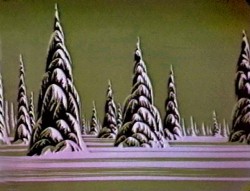
.
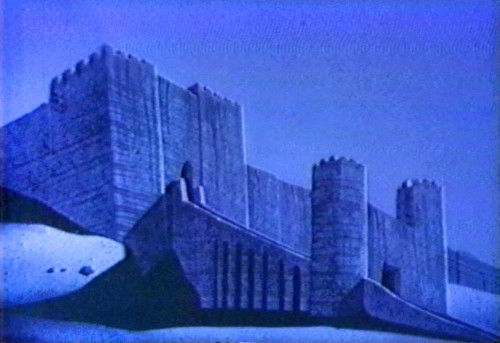
.
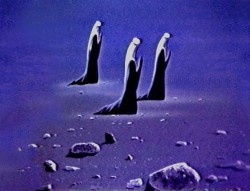 _
_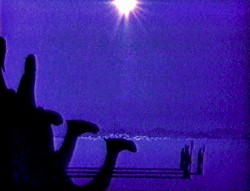
.
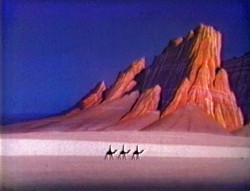 _
_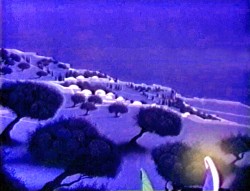
.
 _
_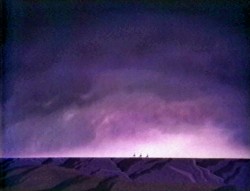
.
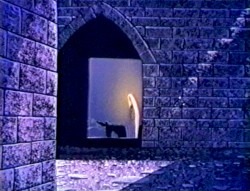 _
_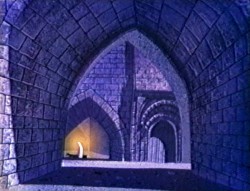
.
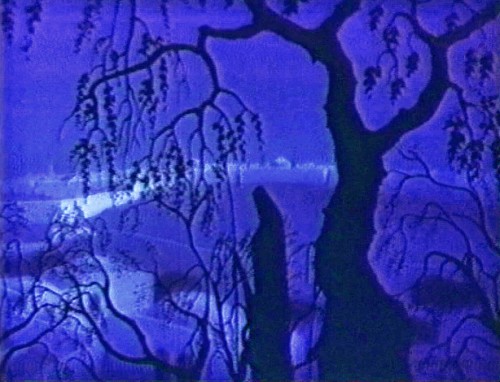
.
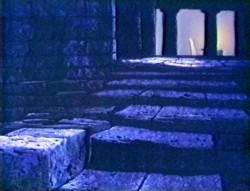 _
_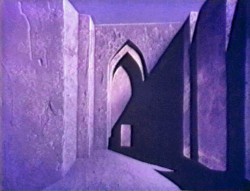
.
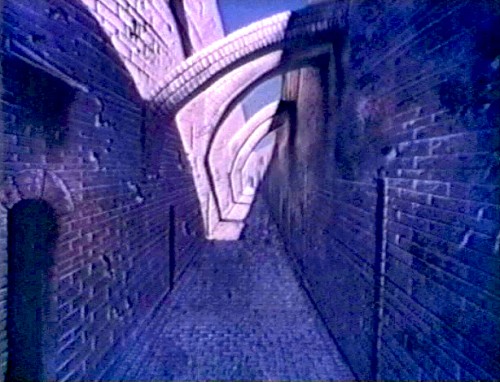
.
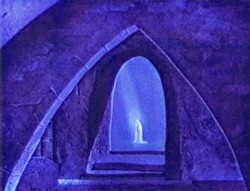 _
_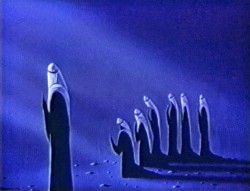
.
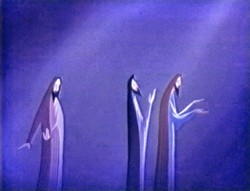 _
_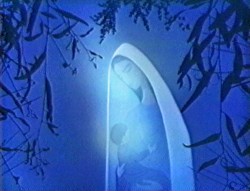
.
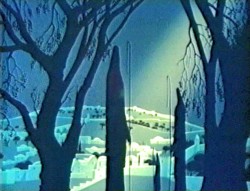 _
_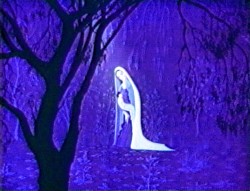
.
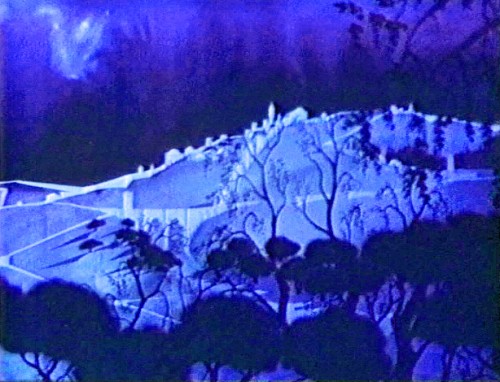
Animation Artifacts 14 Dec 2007 08:46 am
Guilty Greek Pleasures
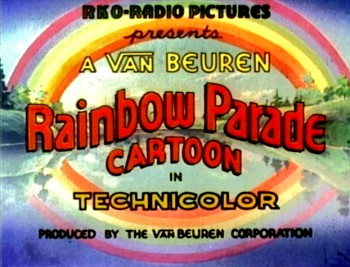 – Mark Mayerson started it. He posted a well-deserved praise for the dvd collections that have been released by Steve Stanchfield through his Thunderbean Animation.
– Mark Mayerson started it. He posted a well-deserved praise for the dvd collections that have been released by Steve Stanchfield through his Thunderbean Animation.
Steve’s been doing a fabulous job of packaging some great shorts that would certainly be otherwise ignored. His Cubby Bear dvd is outstanding. Harman-Ising did several of these films immediately after leaving the Schlesinger studio, just prior to taking over MGM. Without Steve’s dedication, they’d be all but invisible in the home market.
Mark’s comments focused on the new Little King collection from Thunderbean. Otto Soglow‘s silent comic strip character was nicely adapted to animation via the Van Beuren studio, and the results are well collected here.
I have an interest in the work done at this New York studio that I think is more than just nostalgic. Amadee Van Beuren was one of the founders of the Fables Corporation and ultimately bought out the other investors after already setting up the Van Beuren Corporation in 1928. He rolled Fables Corp into Van Beuren and fired a number of its employess including Paul Terry and Frank Moser (They ended up forming a company that became known as Paul Terry-toons.) Van Beuren was able to get a theatrical release for his shorts via RKO.
The principal product was a series of Tom and Jerry cartoons. Not the cat & mouse but the tall & short guys. These weren’t very successful, so by 1933, there was a series of Amos and Andy cartoons. Adapted from the radio show by Gosden and Correll, the series suffered when the creators couldn’t come up with enough material to keep the shorts in production. The Little King series wasn’t well received, and RKO looked for a way to ramp up Amadee Van Beuren’s decision making. They needed stars.
Burt Gillette originally came from New York, went to work for Disney directing some of their great shorts – including The Three Little Pigs and Flowers and Trees before 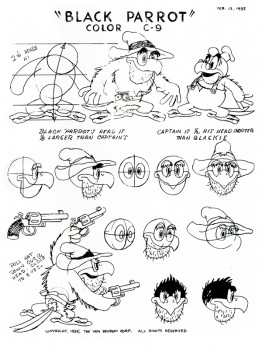 ending up at Van Beuren directing the studio. Mark Mayerson records a good summary of his career.
ending up at Van Beuren directing the studio. Mark Mayerson records a good summary of his career.
A number of other important animation personnel passed through the studio on the way to something bigger. Jack Zander, Joe Barbera, Carl Urbano, Bill Littlejohn, Johnny Gentilella, Izzy Klein, Tom Palmer, Frank Tashlin, Pete Burness, Marty Taras, Dan Gordon and Shamus Culhane all had short stays.
The company had no real star to feature in their shorts. They offered Molly Moo Cow in a couple of amiable but not great films; the Toonerville Trolley travelled in from the comic strips with a couple of successful films; Felix the Cat was reworked and bastardized for a limited couple of shorts. There was also a series set in “Parrotville,” and an odder group of cartoons you’ll be hard pressed to find.
The failed shorts that wholly grabbed my interest, when I was younger, was the start of a series they did featuring characters from Greek and Roman mythology. It never got very far; they did only two of them.
It’s A Greek Life (1936) starred a shoe repairing centaur, two ducks and Mercury who comes to get his winged shoes repaired. Oddly, a film called “The Greek Life” has a group of characters with clichéd Italian accents. The film was directed by Dan Gordon. Winston Sharples was obviously going to move from here to become Paramount’s in-house animation composer.
Here are some frame grabs:
You can watch a podcast of this short on-line at The Animation Station.
Another short, Cupid Always Gets His Man, directed by Gilette and Tom Palmer, features a training depot and way station for Cupids out to get their “Man”. In this case is a caricature of W.C.Fields and Edna Mae Oliver (not as well drawn as the Disney caricatures in Mickey’s Gala Premier also directed by Gillette.)
On DVD they’re part of Cartoons That Time Forgot from Image.
For those of you who enjoy reading the third string movie reviewers of your local newspapers, today’s a good day. Someone had to review Alvin and the Chipmunks.
In New York the NYDaily News had Elizabeth Weitzman:
“‘Chipmunks’ drive us to rodent rage”
the NYTimes had Andy Webster:
“Hollywood continues its tired milking of old television properties with “Alvin and the Chipmunksâ€
First stringer, Lou Leminick, of the NYPost said:
UPDATED ALVIN A GYP-MUNK
“For adults, it’s like being hit over the head with a mallet every 10 seconds for 90 minutes. Two days later, I still had a headache.”
Animation Artifacts &Disney &Story & Storyboards 10 Dec 2007 09:13 am
Perambulator
John Alden Carpenter ‘s symphony, Adventures in a Perambulator, was to be part of Fantasia II when that film was on the boards. This was just prior to the original Fantasia‘s theatrical release when they were planning number two and were getting set to go. Apparently the Carpenter piece was to have depicted a baby’s eye view of the world from his carriage. There were other sequences in the planning as well, including the Clair de lune sequence which ultimately became the “Blue Bayou” sequence when it was reworked for Make Mine Music.
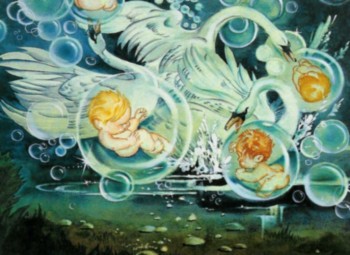 Carpenter was an extremely popular American composer in his time. Many of the leading conductors and orchestras performed his music, and the choice by Disney to animate this symphony shows just how popular he was.
Carpenter was an extremely popular American composer in his time. Many of the leading conductors and orchestras performed his music, and the choice by Disney to animate this symphony shows just how popular he was.
Now, thanks again to John Canemaker, I can post this rare piece of documentation. These are watercolors which were done by the British artist, Sylvia Moberly Holland for this segment. She was closely involved with the Nutcracker segment of Fantasia as well as segments of Bambi and Make Mine Music. (For more information about her work, see Canemaker’s book Before the Animation Begins.)
Here are two photographs of two boards. I’ve broken each up into three parts so that I could download them at a very high resoluton, for you to better see them (when enlarged.)
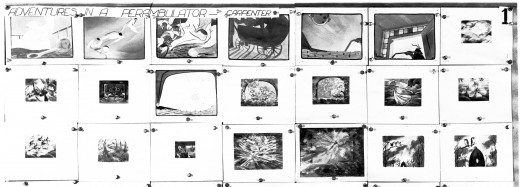 1a
1a
(Click any image to enlarge.)
You can view a production background from the deleted “Blue Bayou” sequence on Didier Ghez’ Disney History site.
Animation Artifacts &Articles on Animation &Disney 05 Dec 2007 08:41 am
Dec. 5th
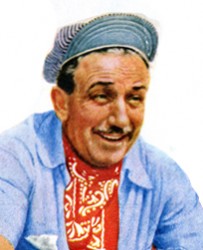 – Today’s Walt Disney‘s birthday. It’s also the second anniversary of this blog. I thought I should post something appropriate for the Disney celebration, and decided to look back some fifty-odd years.
– Today’s Walt Disney‘s birthday. It’s also the second anniversary of this blog. I thought I should post something appropriate for the Disney celebration, and decided to look back some fifty-odd years.
To a young, would-be animator, desperate to read ANYTHING about cartoons or Disney, the Saturday Evening Post offered a miraculous treat. Published in eight installments, Diane Disney Miller gave us a biography of her father. This was not something you saw elsewhere – let me tell you.
The library only offered a small handful of books on animation, and there were no biographies of ANY animator or animation producer/director. Here was the cr̬me de la cr̬me, a biography of the big guy. So I bought every one of those eight issues Рprobably using up my entire allowance for those weeks. (I was ten years old, at the time.) Then, after all eight articles were printed, the biography came out in book form. The perfect Christmas gift.
These days, publishing and marketing have gotten more sophisticated. A new animation book comes out every week, and a new film every other week. However, quantity does not mean quality, and Specials are no longer special. They were then. Things were innocent. A communist hid behind every telephone pole, and animation studios meant Disney.
So, for today, here’s that very first installment of Diane Disney Miller’s book. I’ve left it complete with ads, so you can take in the period as a whole. This book is still entertaining and worth reading, though I’d follow it up with Mike Barrier’s The Animated Man.
_
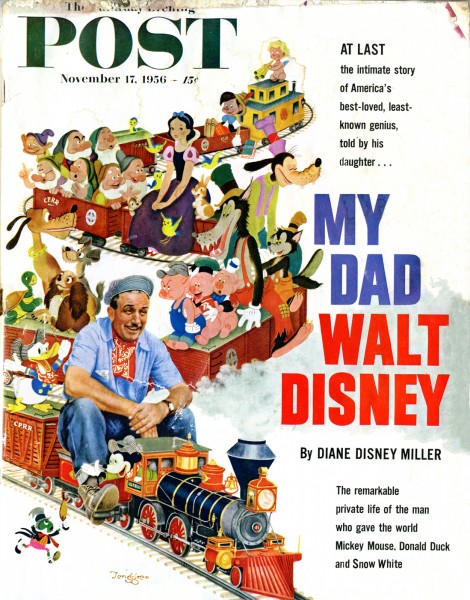
______________(Click any image to enlarge.)
Animation Artifacts &Story & Storyboards 03 Dec 2007 09:01 am
Baia boards
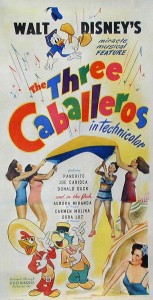 - Thanks again to the enormous generosity of John Canemaker, I’m able to post this board of artwork from the Baia sequence of The Three Caballeros.
- Thanks again to the enormous generosity of John Canemaker, I’m able to post this board of artwork from the Baia sequence of The Three Caballeros.
In this segment from the film, during a big dance number, Donald Duck falls in love with Aurora Miranda. The great Brazilian musicians dance and swing with the birds and other animals in this very colorful and evocative sequence.
(You can watch this number on YouTube today – it might be down tomorrow) in case you don’t know the film.
Here’s a beautiful production drawing with Donald and women from the film. This came from the Latin Baby blog (however it might have been cribbed from Blackwing Diaries.) It’s devoted entirely to the Latin films of Disney. Naturally, Three Caballeros is featured prominently.
The photographic boards come in a very long first page (which had to be broken into two photos) and a more controlled second page. To enable me to post it as large as possible, I broke that first, long board into four parts – each row of the board represents one part. Hence, 1A, B, C, and D are really just one very long board shifted around in photoshop.
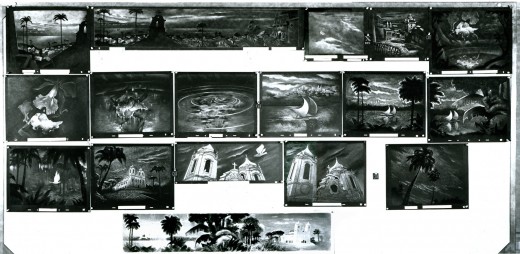
Board #1 actually looks like this. However, due to space constraints I can’t post it at a high enough resolution to make it clearly visible. Consequently, I broke it into the four boards just below this.
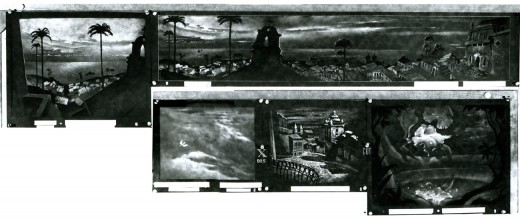 1a
1a
(Click any image to enlarge.)

Hans Bacher ‘s site Animation Treasures (now defunct) included this beautiful reconstructed rendering of a Bg from the sequence – see board 1A.
Art such as this will be missed with the tear-down of Hans’ excellent sites, and I can only hope that he’ll be able to get some newer site – not blog – together for this great artwork.
Animation &Animation Artifacts &Disney &Story & Storyboards 28 Nov 2007 08:45 am
Bill Tytla’s Dumbo sequence
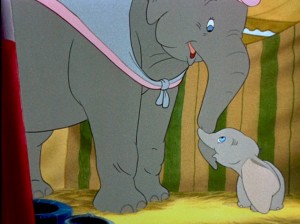 - Yesterday, I posted John Canemaker‘s archival copy of the storyboard for Dumbo; the sequence where he gets washed by his mother and plays around her legs.
- Yesterday, I posted John Canemaker‘s archival copy of the storyboard for Dumbo; the sequence where he gets washed by his mother and plays around her legs.
I think this sequence, on film, is one of the greatest ever animated. There’s a sweet tenderness and an obviously close relationship between baby Dumbo and his mother which is built on the back of this sequence. It not only establishes both characters solidly, without words, but it sets up the mood of everything that will soon happen to the pair during the remaining 45 minutes of the film. Without that established bond, the audience wouldn’t feel so deeply for the pair during the “Baby Mine” song or care so much about Dumbo’s predicament.
Tytla has said that he based the animation of the baby elephant on his young son who he could study at home. Peet has said that Tytla had difficulty drawing the elephants and asked for some help via his assistant. There’s no doubt that both were proud of the sequence and tried to take full credit for it. No doubt both deserve enormous credit for a wonderful sequence. Regardless of how it got to the screen, everyone involved deserves kudos.
Here are a lot of frame grabs of the sequence. I put them up just so that they can be compared to the extraordinary board posted yesterday. Both match each other closely. Whereas the board has all the meat, the timing of the animation gives it the delicacy that would have been lost in a lesser animator’s hands, or, for that matter, in a less-caring animator’s hands. The scene is an emotional one.
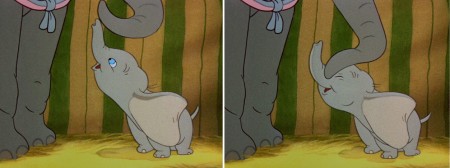
(Click any image to enlarge.)

Animation Artifacts &Disney &Story & Storyboards 27 Nov 2007 08:48 am
Bill Peet’s Dumbo Board
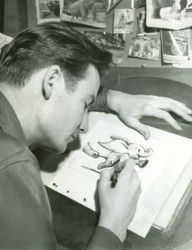 - Thanks to a loan from John Canemaker, I can continue posting some of the brilliant storyboard work of Bill Peet. The guy was a masterful artist. Every panel gives so much inspiration and information to the animators, directors and artists who’ll follow up on his work.
- Thanks to a loan from John Canemaker, I can continue posting some of the brilliant storyboard work of Bill Peet. The guy was a masterful artist. Every panel gives so much inspiration and information to the animators, directors and artists who’ll follow up on his work.
This is the sequence from Dumbo wherein baby Dumbo plays around the feet of his mother. Brilliantly animated by Bill Tytla, this sequence is one of the greatest ever animated. No rotoscoping, no MoCap. Just brilliant artists collaborating with perfect timing, perfect structure, perfect everything. Tytla said he watched his young son at home to learn how to animate Dumbo. Bill Peet told Mike Barrier that he was a big fan of circuses, so he was delighted to be working on this piece. Both used their excitement and enthusiasm to bring something brilliant to the screen, and it stands as a masterpiece of the medium.
Of this sequence and Tytla’s animation, Mike Barrier says in Hollywood Cartoons: What might otherwise be mere cuteness acquires poignance because it is always shaded by a parent’s knowledge of pain and risk. If Dumbo “acted” more, he would almost certainly be a less successful character—”cuter,” probably, in the cookie-cutter manner of so many other animated characters, but far more superficial.
I had to take the one very long photstat and reconfigure it in photoshop so that you could enlarge these frames to see them well. I tried to keep the feel of these drawings pinned to that board in tact.
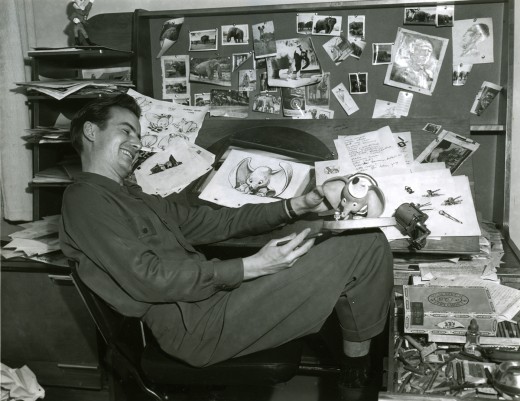
Bill Peet at his desk on Dumbo.
_______________________________________________Tomorrow, Bill Tytla‘s Dumbo.
